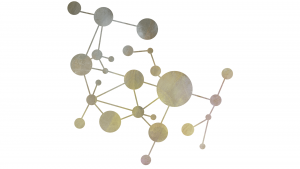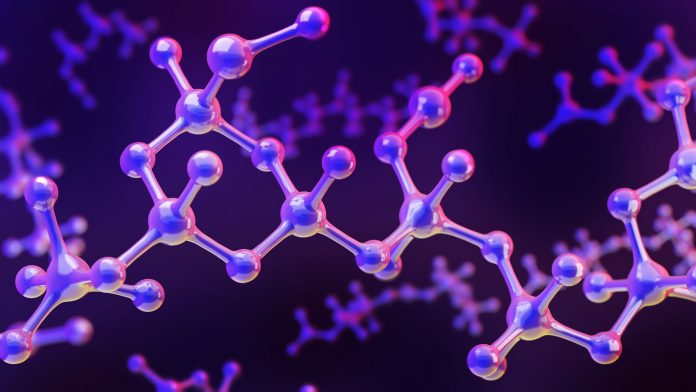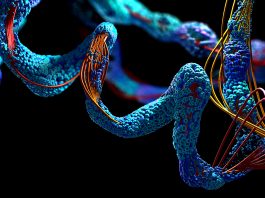Dr Björn M Burmann from the University of Gothenburg outlines the central role of NMR spectroscopy in modern structural biology.
The central dogma that structure and dynamics guide function of the macromolecular world for machines and instruments also applies to the micromolecular world, as the protein structure and its inherent dynamical properties are directly linked to its respective function within the cellular context. Therefore, to understand the functional repertoire of important proteins and other biomolecules, such as nucleic acids, lipids, etc., a detailed understanding of this crucial interplay is mandatory to be able to address diseases rooted on protein dysfunction and misfolding.
Methods for examining protein structure
To be able to achieve a high-resolution three-dimensional structure of a macromolecule, like a protein, researchers have, in general, three experimental options: X-ray crystallography, cryo-electron microscopy (cryo-EM) and nuclear magnetic resonance (NMR) spectroscopy. X-ray crystallography was, for the last decade, a very powerful and highly successful technique, with the main drawback that the protein under study needed to be crystallised, which caused (especially for proteins containing large flexible parts) severe issues impairing their structural characterisation in many cases.
However, cryo-EM has lately become the method of choice for the study of larger protein complexes, as it needs significantly less material and the proteins do not need to form a crystal. Nevertheless, both of these highly efficient methods provide only a single static picture of a protein with limited information of its inherent movements, the so-called protein dynamics. In recent decades, it has become more apparent that a view of a protein as a static entity is rather wrong, and that one key feature is their inherent dynamics and structural adaptions.
Besides these experimental approaches, in the last one to two years the latest in silico protein structure prediction approaches made headlines as they came close to fulfilling the classical dogma posed by Afinsen almost 50 years ago that the “amino acid sequence determines the most stable three-dimensional fold of a given protein” and thus the functional form.1 The algorithms AlphaFold from DeepMind,2,3 as well as RoseTTAFold by David Baker’s lab,4,5 come very close to fulfilling this promise, providing researchers with a myriad of previously unavailable structural information guiding current experimental designs. Several comparative studies already indicated that, in the majority of the tested cases, the now available computational predictions match well with the available experimental data.6,7
This, of course, poses the interesting question of whether the above-mentioned experimental methods might turn obsolete in the near future. Besides the general fact that in silico predictions will always need experimental verification, there are two main crucial aspects these methodologies currently cannot address:
- The vast majority of clinically relevant mutations in human diseases are actually so-called single-point mutations – mutations of a single amino acid within a complete protein which can range in size from 60–1,000 or more amino acids. The previously mentioned algorithms were not trained to be able to do this task and are unable to provide a clear picture of the effects caused by these individual mutations, although other approaches, such as the recently reported evolutionary model of variant effect (EVE) method by the Marks lab,8 might be able to close this gap in the near future; and
- Similar to static protein structures generated by X-ray and cryo-EM, AlphaFold/RoseTTAfold are unable to provide a complete picture of the underlying movements and dynamics of a given protein, that are key to a detailed functional understanding.

Benefits of NMR spectroscopy
On the other hand, these questions are one of the strengths of NMR spectroscopy. Whilst NMR also makes it possible to determine a protein structure, but the used approaches can already consider structural variations as they provide structural ensembles even though NMR structure determination is very laborious. Another key advantage of high-resolution NMR spectroscopy is that it is currently the most powerful technique to study on the atomic level protein dynamics ranging from the picosecond (e.g., movements of chemical bonds) up to real time (e.g., enzyme catalysis). This enables my team, as well as researchers around the globe, to study a broad range of timescales in order to understand the crucial details of protein function in a detail not possible with other methods.
Even though NMR spectroscopy was initially limited to rather small proteins, our team studies large molecular protein complexes (~500–800 kDa) by sophisticated NMR methods relying on specific labelling schemes initially developed in world-leading labs such as the Kay lab in Toronto.9 The clever use of the available options in the NMR tool box enables researchers of today to derive structural and dynamical adaptations of these complexes at the atomic level in solution. Furthermore, many studies skillfully combine the strength of different structural biology and auxiliary biophysical methods, in order to obtain a most complete picture of how proteins work at the atomic level.
Therefore, the advances in the structural biology field, especially in cryo-EM and lately computational methods, clearly enriched the field and will facilitate future breakthrough findings in understanding the structure/dynamic/function interplay for a large variety of proteins involved in essential processes and will significantly contribute to a clearer view on the structural and functional changes within disease, causing mutations of key proteins.
References
1: Afinsen, C B Principles that govern the folding of protein chains. Science 181, 223-230 (1973)
2: Jumper, J & Hassabis, D Protein structure predictions to atomic accuracy with AlphaFold. Nat. Methods 19, 11-12 (2022)
3: Jumper, J et al. Highly accurate protein structure prediction with AlphaFold. Nature 596, 583-589 (2021)
4 Baek, M & Baker, D Deep learning and protein structure modeling. Nat. Methods 19, 13–14 (2022)
- Baek, M et al. Accurate prediction of protein structures and interactions using a three-track neural network. Science 373, 871–876 (2021)
- Robertson, A J et al. Concordance of X-ray and AlphaFold2 models of SARS-CoV main protease with residual dipolar couplings measured in solution. J. Am. Chem. Soc. 143, 19306–19310 (2021)
- Zweckstetter, M NMR hawk-eyed view of AlphaFold2 structures. Protein Sci. 30, 2333–2337 (2021)
- Frazer, J et al. Disease variant prediction with deep generative models of evolutionary data. Nature 599, 91-95 (2021)
- Tugarinov, V, Kanelis, V & Kay, L E Isotope labeling strategies for the study of high-molecular-weight proteins by solution NMR spectroscopy. Nat. Protoc. 1, 749–754 (2006)
Associated organisations:

Please note, this article will also appear in the eleventh edition of our quarterly publication.





